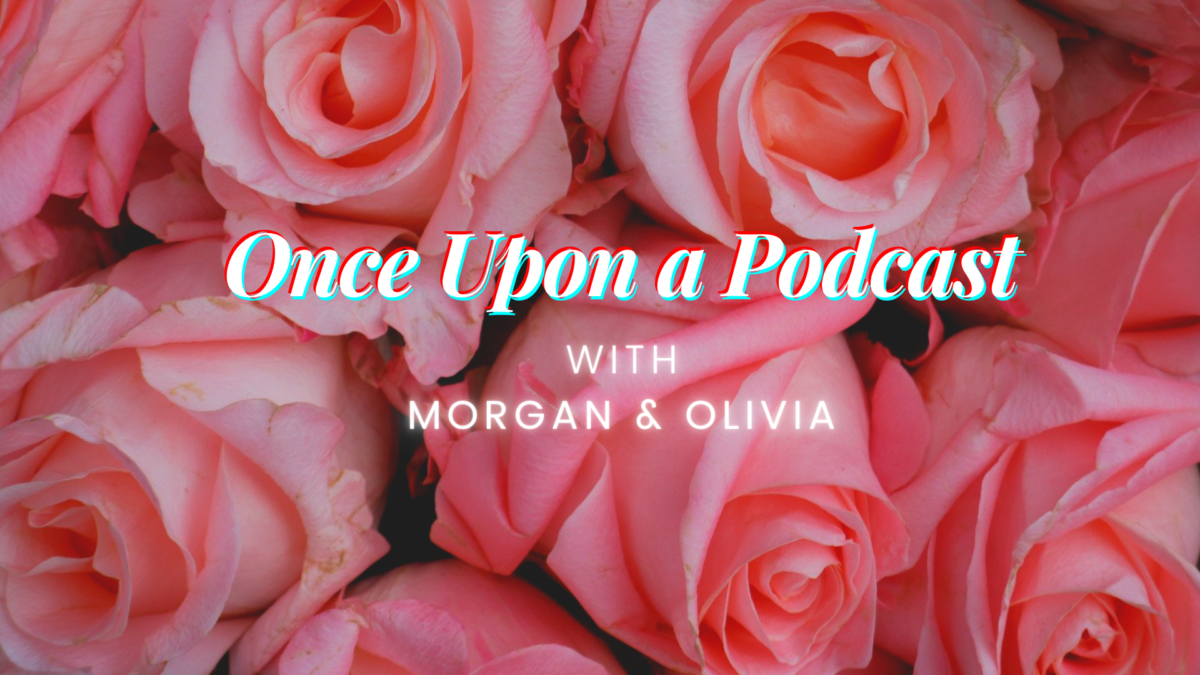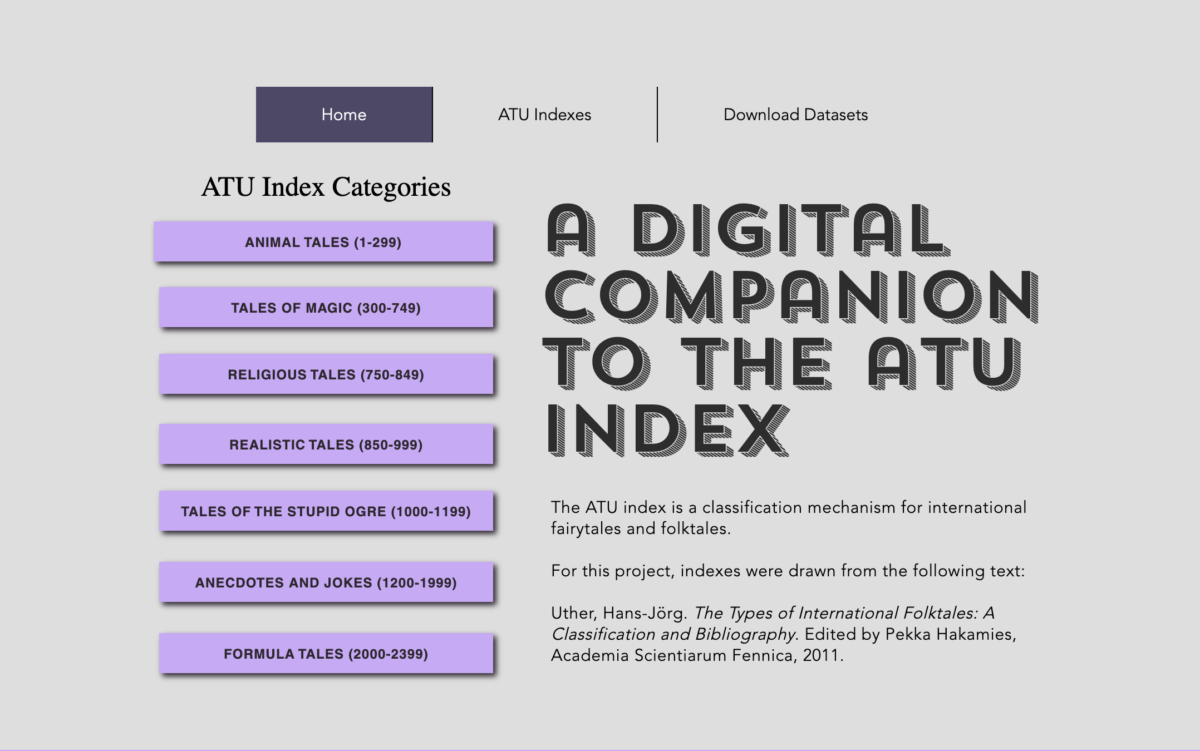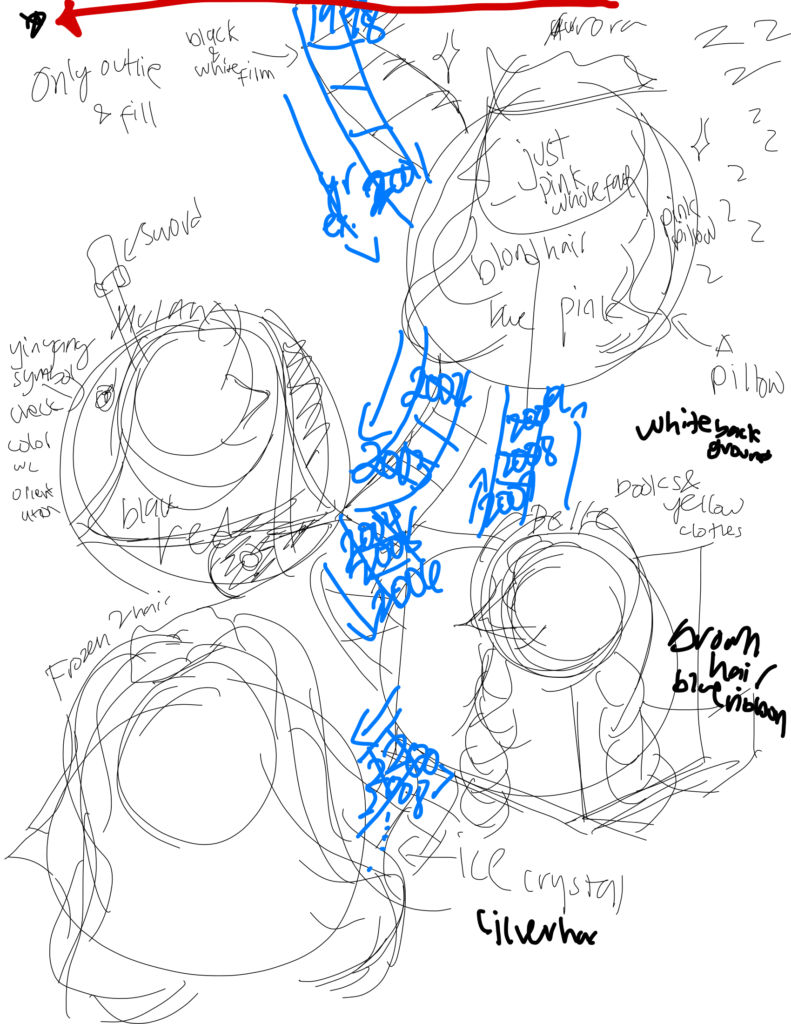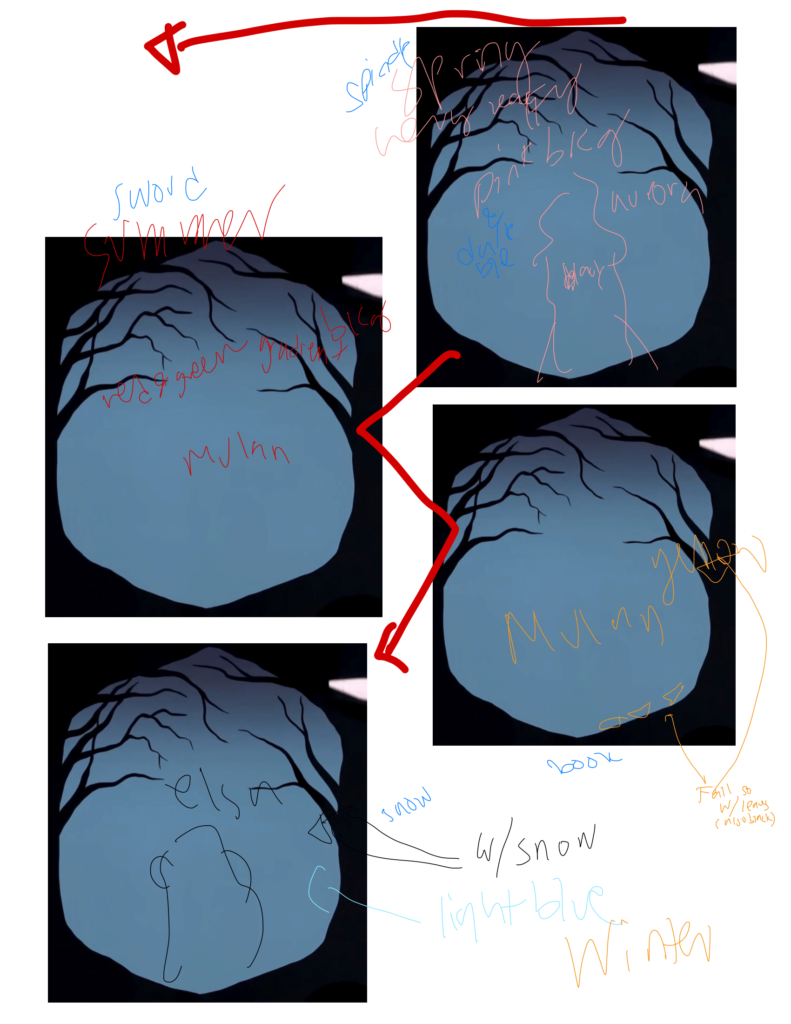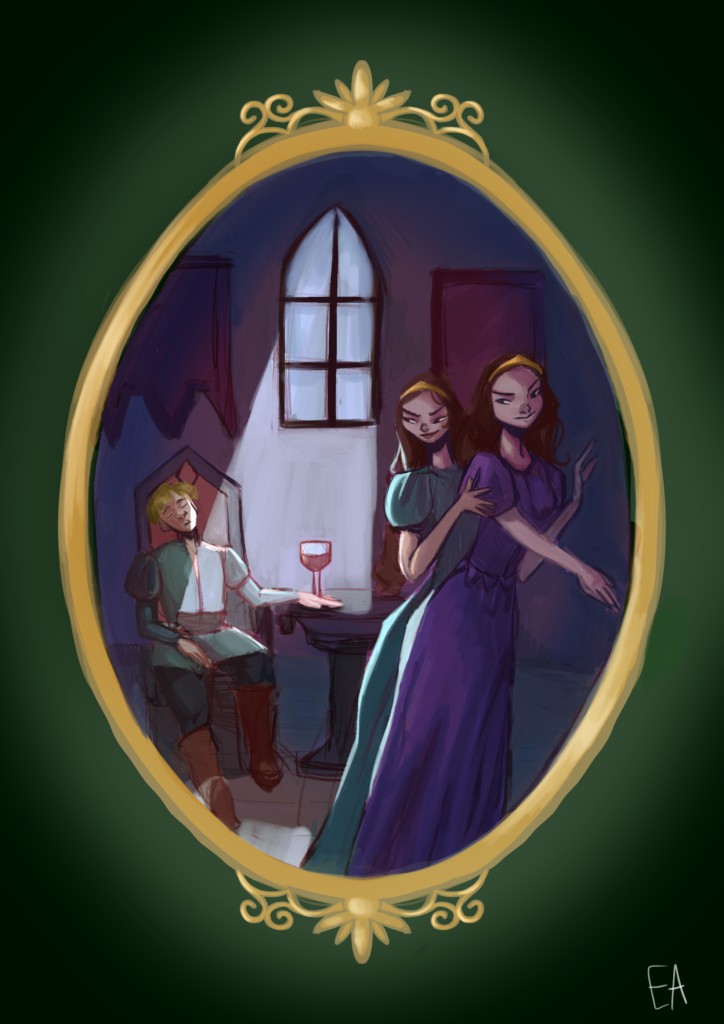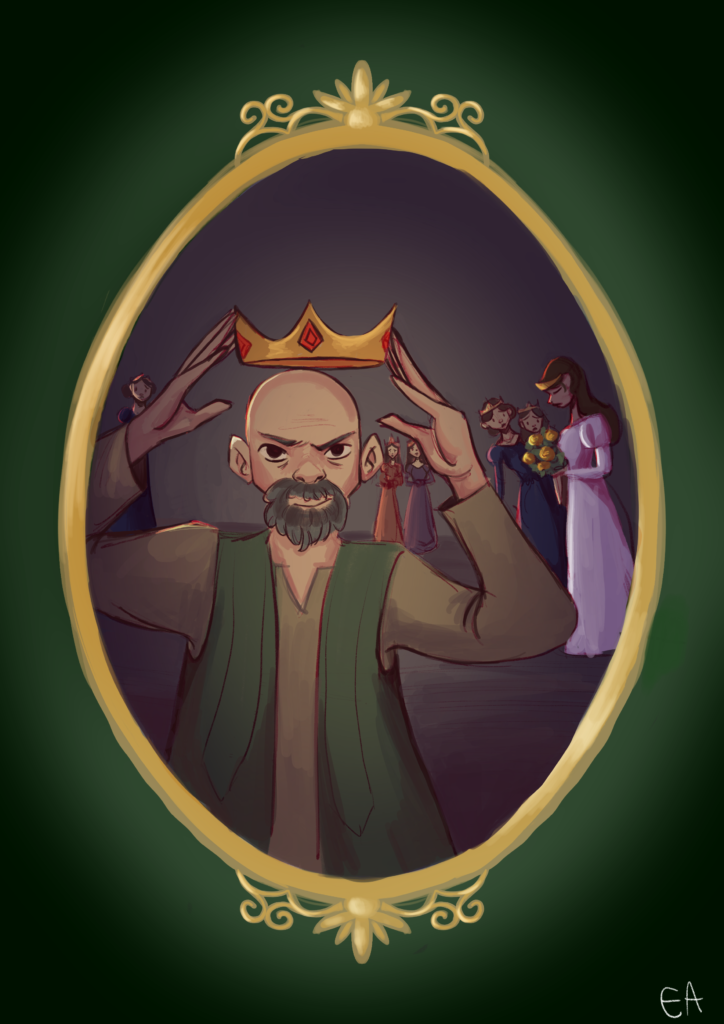By Alexis Chun
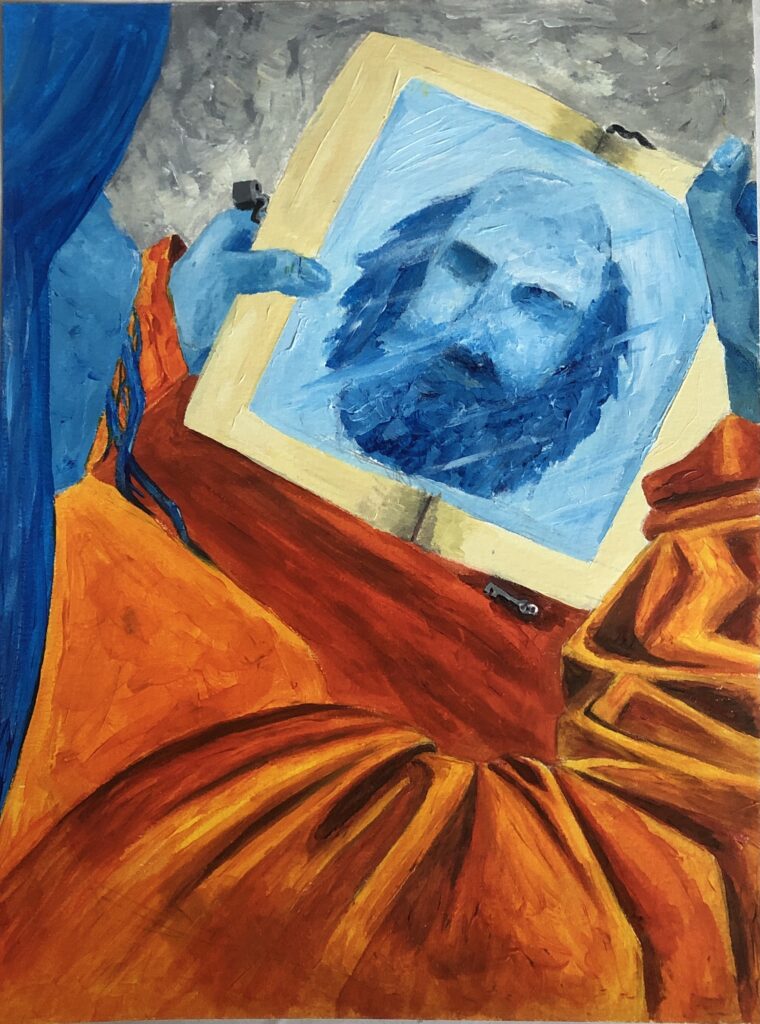
In this painting, I wanted to portray the idea of the fairytale villain as someone or something that exists within us. When I was choosing which characters to paint, it was important to me that I choose a male villain and female protagonist. In addition to illustrating that there can be a villain within the hero, I also wanted to show the presence of an internalized male gaze. This intention led me to choose Bluebeard as my villain, and this painting became very inspired by Margaret Atwood’s short story, Bluebeard’s Egg. My painting shows a girl writing in a journal, but inside the journal is a mirror that reflects not her own image, but the image of Bluebeard. The Bluebeard and the girl’s skin and hair are painted in blue tones, while the girl’s clothes are orange. By using opposing colors, I created a direct contrast between the way the girl perceives and presents herself, and her true nature.
Medium: Acrylic paint on paper
